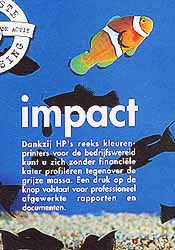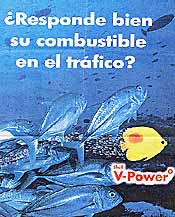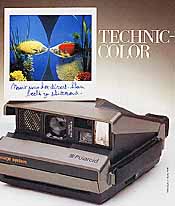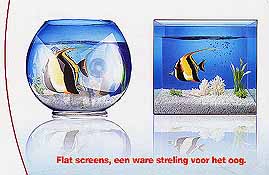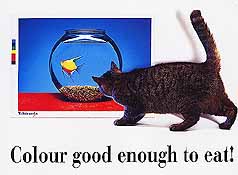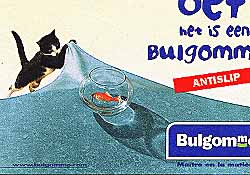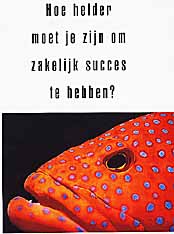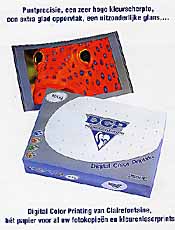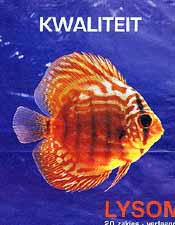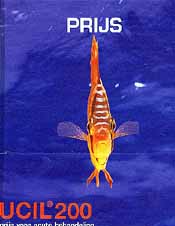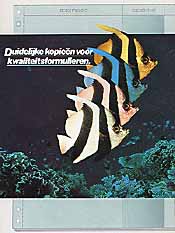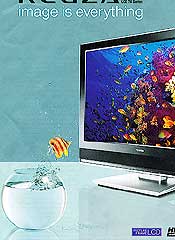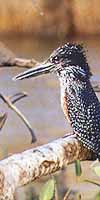
Animals in advertising — Colourful fish
When I learned animal systematics Pisces
were grouped into four classes. That's exactly so in advertising. Copywriters recognize single-colour fish (popular name: goldfish), bright multi-colour
fish (tropical fish), dangerous fish and other fish (mostly small and gray). Most copywriters
target us using the first two groups: proof of the idealized world in adverts.
Colourful fish tell us even less than goldfish. Most are used for their colours (exactly) and in many ads a swap with anything coloured wouldn't change a thing.
Colourful fish tell us even less than goldfish. Most are used for their colours (exactly) and in many ads a swap with anything coloured wouldn't change a thing.
